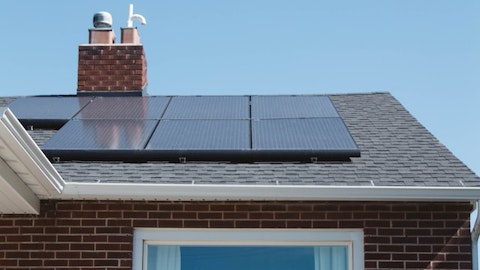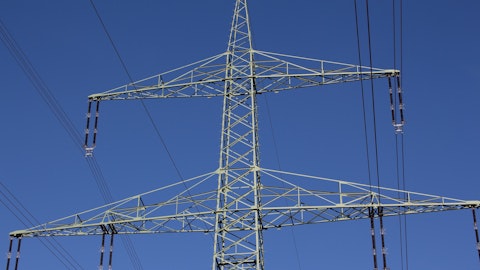Those customers more are demand-driven than usage. As we think about longer-term, there is a number of factors that give us confidence in our assumptions. We continue to see positive economic factors in Pennsylvania and Kentucky, including continued flow unemployment rates and strong GDP growth. As we’ve discussed in numerous times in Kentucky, we’re coming off of back-to-back record years of economic development of over $10 billion of ounce investments in each of ‘21 and ‘22. That includes the Ford EV battery plant initiative, which we’ve talked a lot about. That’s broken ground and well under construction. The state is targeting another $8 billion of investment for 2023. So when we look at the 10 years prior to this period from 2010 to 2020, there was an average of about $4 billion per year in economic development.
So to see $10 billion in each of ‘21 and ‘22 and projecting $8 billion this year highlights the Kentucky is a great place to do business and continued economic development there in support of our growth assumptions. But we continue to see strong industrial growth in manufacturing and agricultural sectors as well.
Vince Sorgi: Yes. We’re not concerned with volumes at all other than the impact on weather. I would say our volume story is really weather-driven.
Paul Zimbardo: Okay. Great. Thanks for the detailed answer. Appreciate it.
Vince Sorgi: Sure.
Operator: The next question comes from David Arcaro with Morgan Stanley. Please go ahead.
David Arcaro: Hi. Good morning.
Vince Sorgi: Hi David. Good morning.
David Arcaro: Hey, good morning. Thanks for taking my questions. Let’s see. I think just one here. I was curious, we are starting to see some easing of supply chain pressures in the solar industry, commodity costs coming down, module prices declining somewhat and PPA prices easing. I was just wondering if you think that could impact at all the outlook for your Kentucky, just the generation mix maybe longer term, or other opportunities to see lower PPA prices or lower costs in the current CPCN filing or if you’re thinking an analysis has evolved at all for the longer term generation mix there?
Vince Sorgi: Yes. Look, I think the bigger issue in getting our solar deployed in Kentucky is citing and permitting days as opposed to necessarily the supply chain issues, although you are right, they have been an issue across the industry, and that is starting to abate. In our case, though I think it is more citing and permitting, which I think the company-owned solutions make that much easier because we can navigate that easier than third-party developers have been able to so far. So, as you know, our CPCN has a combination of company-owned and PPAs in it. We will continue to look at the executability of those PPAs and that if we continue to see issues there that could actually push us more to recommending more company-owned where we have a higher degree of confidence that we can get them built.
David Arcaro: Okay. Got it. That’s helpful color. I didn’t appreciate that in the backdrop there. That’s all I had. Thanks.
Vince Sorgi: You’re welcome.
Operator: The next question comes from Shar Pourreza with Guggenheim Partners. Please go ahead.
Shar Pourreza: Hey. Good morning guys.
Vince Sorgi: Good morning Shar.
Shar Pourreza: Good morning. So, Vince, I just want to – starting with the Kentucky CPCN filing. I mean, obviously, thanks for the incremental color in the prepared on the timeline. As we look ahead to the prospects for settlement. You mentioned August 15th formal conference. I guess what could that look like? Is it partial, maybe the gas, but not the renewables? Just any additional color on how to think about that would be great.
Vince Sorgi: Well, look, I think you can appreciate, I don’t necessarily want to get into negotiating positions at this point on the call. But what I will say just around the process itself is we are actively engaged right now with various interveners. As you mentioned, the settlement conference is scheduled for the 15th, if that goes well, and we can get settlement on at least significant issues in the case with enough parties. Then we may be able to present a stipulation to the PSC for their consideration. As you know, the hearings are scheduled to begin on the 22nd of August. That could become a forum for the PSC to take up the settlement agreement, if we’re able to reach one. But at this point, I would say, Shar, it’s too early to tell if we will be able to reach a settlement.
But if we don’t, of course, we are ready to defend the plan as filed, as we have been indicating all along. So, a little early at this point to tell if we can get there, but certainly, we are open to those discussions.




